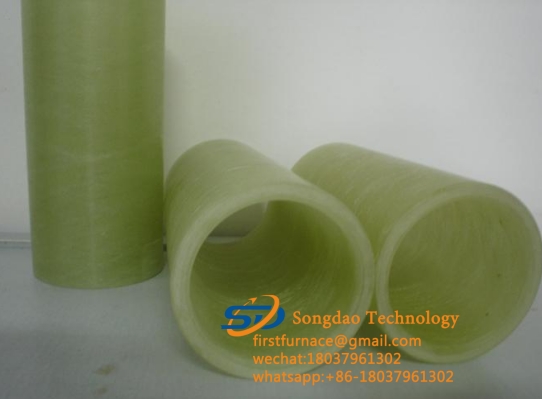- 08
- Feb
Технологија производње и развој и примена цеви од фибергласа
Технологија производње и развој и примена цеви од фибергласа
Постоје три главне врсте цев од стаклених влакана production processes: reciprocating filament winding process, continuous filament winding process and centrifugal casting process.
Процес намотавања клипног филамента (који припада методи фиксне дужине): У овом процесу, резервоар за потапање се враћа са ротирајућим трном, а филаменти дугих стаклених влакана се постављају под одређеним косим углом у односу на осу трна, а помоћни угао (тј. Угао намотаја) контролише се односом брзине кретања резервоара за потапање и брзине ротације трна, а транслационо кретање резервоара за потапање контролише се компјутеризованом електромеханичком контролом. Број слојева намотаја се постепено повећава док се не постигне пројектована дебљина зида. Након што је намотавање завршено, смола у артиклу је значајно очврснута. Након очвршћавања, трн се уклања из цеви од фибергласа.
Continuous filament winding process (belonging to continuous method): The process is that the tube passes through a feeding station that supplies resin pre-impregnated roving, chopped glass fiber reinforced plastic fiber and resin sand mixture in motion, and the tube is continuously advancing in the core mold. made in.
Centrifugal casting process (belonging to the fixed-length method): In this process, the cut glass fiber reinforced material and sand are fed into a steel mold fixed on the bearing, and the unsaturated resin with catalyst is injected into one end of the steel mold to make the steel mold. It impregnates the reinforcing material. Under the action of centrifugal force, the resin replaces the air in the fibers and fillers, thereby producing a dense composite material without pores. Due to the action of centrifugal force, the inner wall of the tube forms a smooth and clean resin-rich inner surface layer. Cures at higher temperatures. The pipe made by this method is also called glass fiber reinforced plastic sand pipe.

